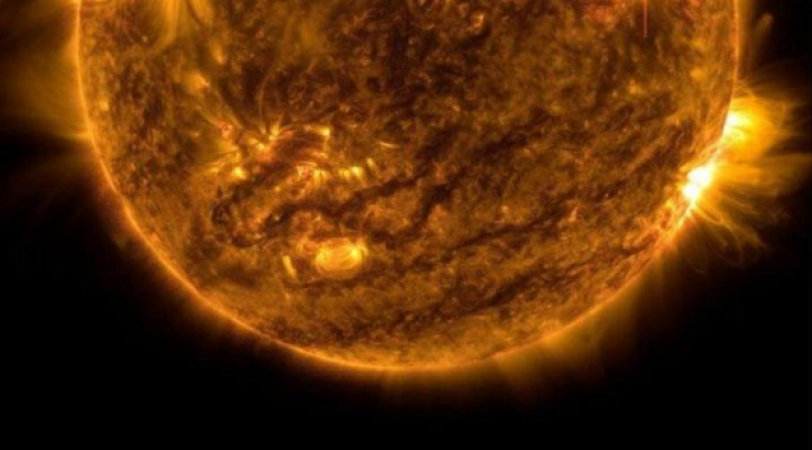
USA: Scientists have developed a new method to predict when and where upcoming solar flares may occur. Which Sun regions are more likely to emit solar flares can be determined using signals from the corona, the upper layers of the solar atmosphere. In the long run, this new study could help with predictions of flares and space weather storms.
Solar flares are energetic releases of light and particles by the Sun. Power grids, navigational signals, radio communication systems on Earth, and even spacecraft and astronauts can be at risk from strong solar flares.
Solar flares from sunspot AR3110 recently disrupted communications systems and rescue efforts in hurricane-hit areas of the US in October 2022.
Also Read: Airtel to invest Rs2,000 ce to set up hyperscale data center in Hyderabad
To make more accurate predictions of solar flares, scientists are observing different regions of the Sun. In the past, scientists have noted that activity in the lower layers of the Sun, such as the photosphere and chromosphere, can explain flares from active regions.
According to the most recent study, the corona "produces small-scale flashes above flare regions, like tiny sparklers before a big firework."
As opposed to the photosphere, or "surface," of the Sun, we can get some very different data from the corona, according to study lead author KD Leka.
Also Read: Apple unveils the M2-powered MacBook Pro and Mac mini
Our findings may help us develop a new marker to identify which active regions are likely to erupt soon and which will remain quiet for the foreseeable future.
The researchers used a recently created image database of active regions of the Sun taken by NASA's Solar Dynamics Observatory for Investigation (SDO).
The database includes photographs taken in ultraviolet and ultra-ultraviolet light over the course of eight years. According to Karin DeSauer of Northwest Research Associates, this is the first time a database of this nature is accessible to the scientific community (NWRA).
Also Read: Google is working on an Apple AirTag-like tracker
The analysis showed that each solar flare was preceded by a brief flare from the Sun's corona. The knowledge gained from this study will help build new tools that can forecast solar flares.